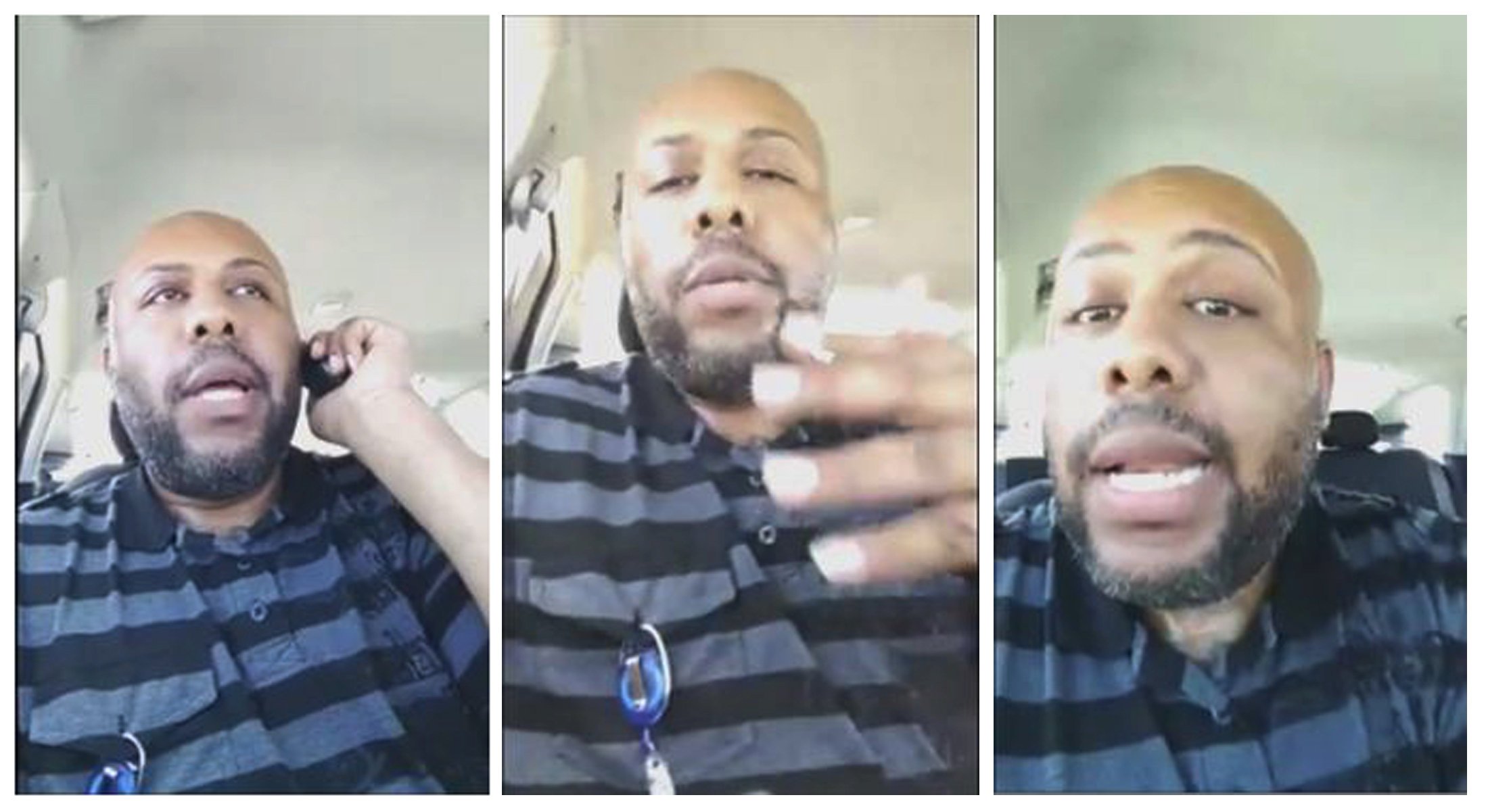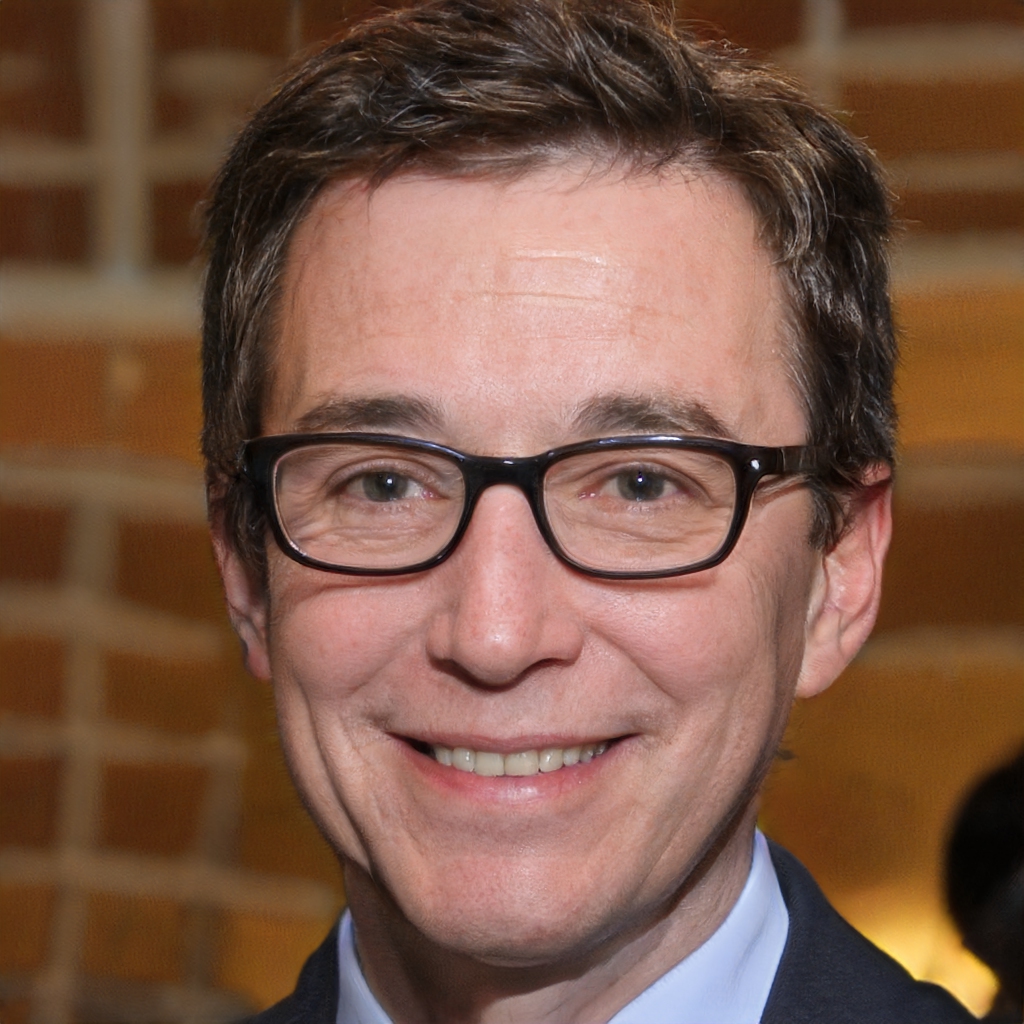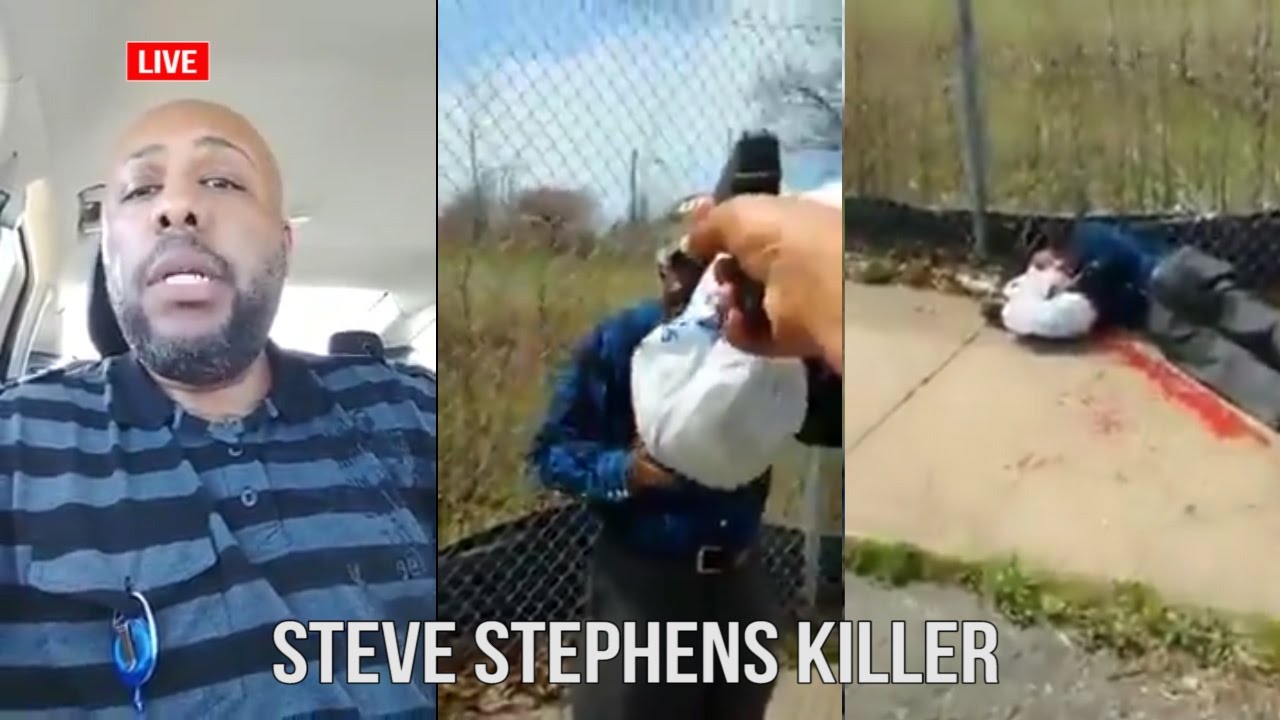The Infamous Case Of Steve Stephens - Unraveling The Tragic Events And Their Impact On Society
Steve Stephens became a household name for all the wrong reasons in April 2017 when he committed a heinous act of violence that shocked the world. His actions and the subsequent manhunt sent shockwaves throughout society, sparking debates about mental health, social media's role, and the need for better support systems.
Author:James PierceReviewer:Dexter CookeAug 10, 2023547 Shares136.6K Views

Steve Stephensbecame a household name for all the wrong reasons in April 2017 when he committed a heinous act of violence that shocked the world. His actions and the subsequent manhunt sent shockwaves throughout society, sparking debates about mental health, social media's role, and the need for better support systems. This article delves into the tragic events involving Steve Stephens, examining the impact on individuals, communities, and the broader society, while also shedding light on the importance of addressing mental health issues and fostering a safer digital environment.
The Cleveland Facebook Live Shooting
The cold-blooded murder of Robert Godwin Sr. by Steve Stephens on April 16, 2017, sent shockwaves through the world and brought to the forefront pressing issues regarding the misuse of social media and the consequences of untreated mental health conditions. The incident not only shattered the lives of those directly involved but also deeply affected millions of people who witnessed the heinous act through the viral Facebook Live video.
Robert Godwin Sr., an innocent elderly man, became an unwitting victim of this senseless violence. His tragic death highlighted the vulnerability of individuals in society and underscored the need for greater vigilance in safeguarding the well-being of our communities, particularly the elderly and vulnerable populations. The random and brutal nature of the attack left people grappling with the unpredictability of violence in modern times.
The disturbing video of the murder spread rapidly across social media platforms, raising ethical concerns about the role of these platforms in disseminating violent content. Facebook, in particular, faced intense scrutiny and criticism for not promptly removing the graphic video and for the challenges it posed in moderating live content effectively. This incident triggered a wave of discussions on the responsibility of social media companies in monitoring and preventing the circulation of harmful and violent content online.
In the aftermath of the video's dissemination, countless individuals who inadvertently saw the distressing footage were left traumatized. The psychological impact of witnessing such violence, even indirectly, can lead to post-traumatic stress disorder (PTSD) and other emotional disturbances. Mental health professionals and crisis helplines had to cope with an influx of individuals seeking support and counseling to deal with the emotional aftermath of exposure to such graphic content.
As the manhunt for Steve Stephens ensued, the case brought mental health issues to the forefront of public discourse. Stephens' history of depression and his expressed feelings of anger and hopelessness raised questions about the availability and effectiveness of mental health services. The tragedy ignited discussions about the importance of identifying warning signs and implementing proactive measures to intervene when individuals are at risk of harming themselves or others.
Law enforcement agencies faced significant challenges in locating and apprehending Stephens, as he took advantage of modern technology and social media to evade capture. This case exposed the complexities of tracking individuals in the digital age and underscored the need for improved cooperation between tech companies and law enforcement to ensure public safety.
The murder of Robert Godwin Sr. also led to a surge in community-driven efforts to promote kindness, empathy, and support for one another. Many local communities in Cleveland and beyond organized vigils and memorials to honor the victim's life and advocate for a safer and more compassionate society.
In the long term, this tragic event sparked changes and policy discussions about mental health care, online content moderation, and the importance of fostering a culture of empathy and understanding. It motivated social media platforms to enhance their efforts to promptly remove violent content and develop better mechanisms for reporting harmful material.
Ultimately, the senseless act committed by Steve Stephens reminded the world of the fragility of life and the urgent need to address the multifaceted issues surrounding mental health, online safety, and community well-being. It serves as a haunting reminder that as a society, we must continually strive to create an environment that prioritizes mental health support, responsible technology use, and a collective commitment to preventing violence and fostering compassion. Only then can we hope to prevent future tragedies like the one that forever changed the lives of Robert Godwin Sr. and his family.
The Manhunt And Aftermath

Steve Stephens: Facebook Live murder manhunt
The nationwide manhunt that ensued after Steve Stephens' heinous act of violence brought the country to a standstill, as law enforcement agencies, media outlets, and the public were consumed by the urgent mission to locate him and bring him to justice.
The incident became a focal point of media coverage, dominating headlines and triggering extensive discussions on social media and news platforms. During the two-day manhunt, the country collectively held its breath, anxiously following every update and lead provided by law enforcement. Stephens' face was plastered across television screens, newspapers, and online platforms, intensifying the sense of urgency and public awareness surrounding the case.
People from all walks of life expressed their outrage, grief, and shock, united in their desire to see the perpetrator held accountable for his actions. The tragedy not only sparked intense media coverage but also led to widespread public scrutiny. Social media platforms were inundated with discussions, debates, and expressions of condemnation and empathy.
Many questioned how such a heinous act could have occurred and what factors may have contributed to Stephens' descent into violence. While the nation grappled with the aftermath of this disturbing event, the sudden loss of a life was compounded by the realization that Stephens had taken his own life before authorities could apprehend him. This tragic turn of events left many wondering about the complexities of mental health and the despair that can drive individuals to such desperate acts.
It also reignited conversations about the importance of timely and accessible mental health support and the need to break down the stigma associated with seeking help. In the wake of this devastating incident, numerous mental health organizations and crisis hotlines saw an increase in outreach as people sought support to process their emotions and reactions.
The incident served as a somber reminder of the broader mental health crisis in society and the need for continued efforts to improve mental health care and resources. The manhunt and the subsequent loss of Stephens' life also prompted discussions about the state of mental health care in the United States. Many advocates argued for increased funding, improved accessibility, and better integration of mental health services into mainstream healthcare systems.
It highlighted the urgency of addressing mental health issues comprehensively to prevent future tragedies. The case of Steve Stephens left an indelible mark on the collective consciousness, serving as a catalyst for change in various areas. Social media platforms faced heightened scrutiny regarding their content moderation policies and the responsible handling of violent and harmful material.
In response, platforms like Facebook and others reevaluated their reporting systems and implemented stricter guidelines to prevent the spread of graphic content.
The Mental Health Factor
In the aftermath of the incident, discussions about mental health came to the forefront. Many questioned what could have driven Stephens to commit such a heinous act. While it is essential to remember that mental illness does not excuse violent behavior, it raised awareness about the need for better mental health support systems and increased access to resources for those struggling with psychological challenges.
Social Media's Role And Responsibility
The live streaming of such a brutal act on Facebook brought attention to the responsibilities and challenges faced by social media platforms. The incident prompted soul-searching within the tech industry, urging platforms to adopt stricter content moderation policies to prevent the spread of violent and harmful content. It also called for increased awareness among users about reporting concerning behavior to authorities promptly.
Impact On The Community
The heinous incident involving Steve Stephens had a profound and lasting impact on the Cleveland community and the broader society, leaving a deep emotional scar that would take time to heal. The senseless violence inflicted upon Robert Godwin Sr. shattered the lives of his loved ones, leaving them in unimaginable grief and pain. The loss of an innocent life in such a brutal and random manner sent shockwaves through the community, prompting soul-searching and a heightened sense of vulnerability.
In the immediate aftermath of the tragedy, Cleveland residents felt a palpable sense of fear and unease. The incident raised concerns about personal safety and the potential for such violence to strike anyone at any time. Many grappled with questions about what could have been done to prevent such a horrific act and how to ensure the safety of their loved ones in a seemingly unpredictable world.
However, amid the darkness and sorrow, the Cleveland community demonstrated incredible resilience and solidarity. They came together to support the grieving family of Robert Godwin Sr., offering condolences, prayers, and acts of kindness. Vigils and memorial services were organized, providing spaces for people to come together, share their grief, and find solace in each other's company.
The tragedy served as a stark reminder of the importance of supporting one another during challenging times. The community rallied behind the Godwin family, providing them with not just emotional support but also tangible assistance in navigating the aftermath of the loss. This outpouring of compassion and empathy showcased the strength and resilience of the human spirit in the face of adversity.
The incident also ignited discussions about the need for greater community cohesion and support systems. Individuals and organizations within Cleveland began working more closely to foster a sense of unity and solidarity, focusing on building a stronger social fabric that would help prevent future acts of violence and offer support to those in distress.
Beyond Cleveland, the tragedy resonated with people across the country and even globally. The viral nature of the Facebook Live video meant that countless individuals outside of Cleveland also witnessed the harrowing footage, prompting them to grapple with their own emotions and reactions. It sparked a collective call for more compassion and understanding in society and a commitment to working together to address the root causes of violence.
In response to the incident, numerous initiatives were launched to address mental health awareness, promote community engagement, and foster a culture of kindness and empathy. Schools, workplaces, and community organizations engaged in conversations about violence prevention and mental health support, seeking to create safer and more supportive environments for everyone.
Furthermore, the tragedy prompted individuals and institutions to reflect on the impact of social media on society and the need for responsible digital citizenship. Discussions about the responsible use of technology and the potential consequences of online actions became more prevalent, highlighting the importance of cultivating a safer digital environment.
Overall, while the incident involving Steve Stephens caused immense pain and grief, it also brought the Cleveland community and society at large together. It emphasized the significance of supporting one another during challenging times and sparked efforts to foster a more compassionate and resilient society.
The tragedy served as a somber reminder of the need to address mental health issues, strengthen community bonds, and create a safer and more understanding world for everyone. Through collective action and empathy, the Cleveland community and others impacted by this tragedy continue to honor the memory of Robert Godwin Sr. and work towards preventing such senseless violence in the future.
Learning From Steve Stephen Incident And Moving Forward
The case of Steve Stephens serves as a grim reminder of the complexities surrounding violence, mental health, and the power of social media. It highlights the importance of early intervention and providing individuals with mental health resources before they reach a crisis point. Additionally, it underscores the responsibility of online platforms to create safer digital environments for their users.
People Also Ask
Who Was Steve Stephens?
Steve Stephens was a 37-year-old man from Cleveland, Ohio. He was a chef and a musician. He was also a convicted felon, having been convicted of robbery in 2009.
What Happened On April 16, 2017?
On April 16, 2017, Stephens went on a shooting spree in Cleveland. He shot and killed seven people, including a 74-year-old woman. He live-streamed the shootings on Facebook.
Why Did Steve Stephens Do This?
Stephens' motive for the shootings is still unknown. He had a history of mental health problems, and he may have been suffering from a psychotic episode at the time of the shootings. He may also have been motivated by revenge, as one of the victims was his ex-girlfriend.
Here are some additional details about the shootings:
- The shootings lasted for about an hour.
- Stephens used a .40-caliber handgun.
- He shot the victims at random.
- The shootings ended when Stephens shot himself in the head.
The shootings were a tragedy, and they caused a great deal of fear and uncertainty in the Cleveland community. They also raised questions about the dangers of social media and the need for better mental health care.
Conclusion
The case of Steve Stephens stands as a haunting reminder of the darkness that can sometimes exist within society. The tragic events sparked vital conversations about mental health support, social media's role, and the need for greater compassion and understanding.
By learning from this devastating incident, society can work towards creating a more inclusive, supportive, and safe environment for everyone. As we move forward, it is essential to prioritize mental health care, responsible online practices, and meaningful connections to build a better and more compassionate world.

James Pierce
Author
James Pierce, a Finance and Crypto expert, brings over 15 years of experience to his writing. With a Master's degree in Finance from Harvard University, James's insightful articles and research papers have earned him recognition in the industry.
His expertise spans financial markets and digital currencies, making him a trusted source for analysis and commentary. James seamlessly integrates his passion for travel into his work, providing readers with a unique perspective on global finance and the digital economy.
Outside of writing, James enjoys photography, hiking, and exploring local cuisines during his travels.

Dexter Cooke
Reviewer
Dexter Cooke is an economist, marketing strategist, and orthopedic surgeon with over 20 years of experience crafting compelling narratives that resonate worldwide.
He holds a Journalism degree from Columbia University, an Economics background from Yale University, and a medical degree with a postdoctoral fellowship in orthopedic medicine from the Medical University of South Carolina.
Dexter’s insights into media, economics, and marketing shine through his prolific contributions to respected publications and advisory roles for influential organizations.
As an orthopedic surgeon specializing in minimally invasive knee replacement surgery and laparoscopic procedures, Dexter prioritizes patient care above all.
Outside his professional pursuits, Dexter enjoys collecting vintage watches, studying ancient civilizations, learning about astronomy, and participating in charity runs.
Latest Articles
Popular Articles
